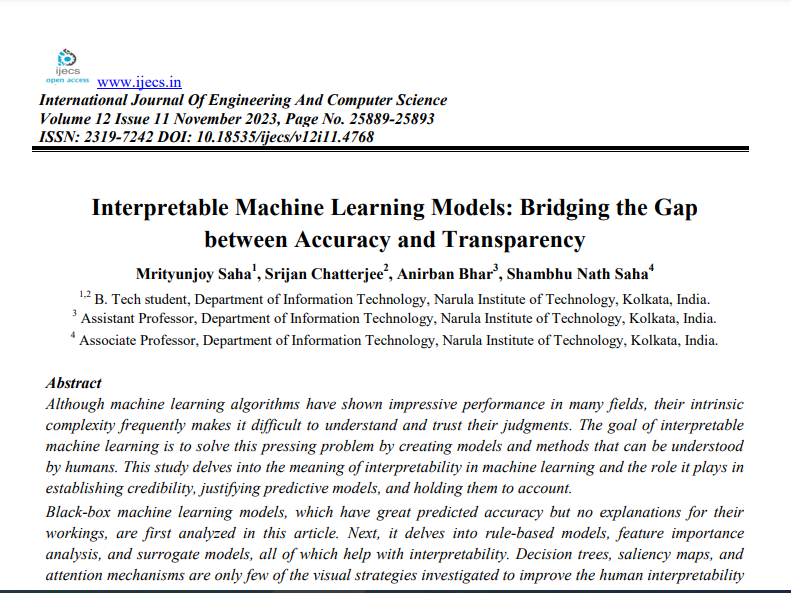
Downloads
Keywords:
Interpretable Machine Learning Models: Bridging the Gap between Accuracy and Transparency
Authors
Abstract
Although machine learning algorithms have shown impressive performance in many fields, their intrinsic complexity frequently makes it difficult to understand and trust their judgments. The goal of interpretable machine learning is to solve this pressing problem by creating models and methods that can be understood by humans. This study delves into the meaning of interpretability in machine learning and the role it plays in establishing credibility, justifying predictive models, and holding them to account.
Black-box machine learning models, which have great predicted accuracy but no explanations for their workings, are first analyzed in this article. Next, it delves into rule-based models, feature importance analysis, and surrogate models, all of which help with interpretability. Decision trees, saliency maps, and attention mechanisms are only few of the visual strategies investigated to improve the human interpretability of complicated models.
In this article, we explore the potential applications and advantages of interpretable machine learning in many fields, such as healthcare, finance, and autonomous systems. By providing clear justifications for medical diagnoses, interpretable models help doctors make educated decisions and gain insight into the reasons driving the models' predictions. Interpretable machine learning also enables risk assessments and fraud detection in the financial sector, with explanations that can be understood by regulators and stakeholders.
Article Details
Published
Issue
Section
License

This work is licensed under a Creative Commons Attribution-NonCommercial-ShareAlike 4.0 International License.

